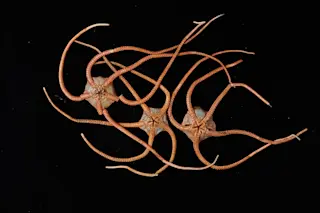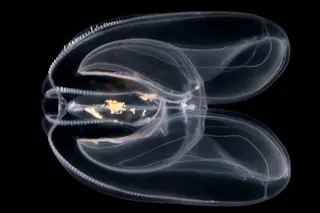Each of us is a marvel of spontaneous organization: A single fertilized egg gave rise to a complex system of specialized tissues and properly located organs. Researchers at Boston's Forsyth Institute and at Harvard University have taken a big step toward explaining this process. When an embryo consists of just four cells, they have found, an electric gradient starts switching on the genes that distinguish left from right.
"We knew that something was instigating differential gene expression, serving as a master blueprint for development, and we had a hunch it happened right from the get-go," says biologist Michael Levin of the Forsyth Institute. He and his colleagues used a voltage-sensitive fluorescent dye to trace an electric potential across frog and chick embryos. The researchers identified the mechanism responsible for this electrical gradient: a tiny ion pump on the surface of the cells. The pump is localized on one side of the embryo at the four-cell stage, showing the embryo is divided into left and right just two hours after fertilization. Levin then used drugs to disable the ion pump in another set of embryos. These cells developed into organs that lacked the normal left-right configuration.
Previous work has demonstrated that similar electrical fields help regulate tissue growth in adult organisms as well. "When a salamander's leg is chopped off, the wound emits a distinct electrical field that controls the formation of a new limb. If you impose the same electrical pattern on a mouse, you can also get tissue regeneration," Levin says. He hopes the knowledge can be used to target unwanted tissue generation, as in cancer, or to direct the healing of injured organs in humans.














